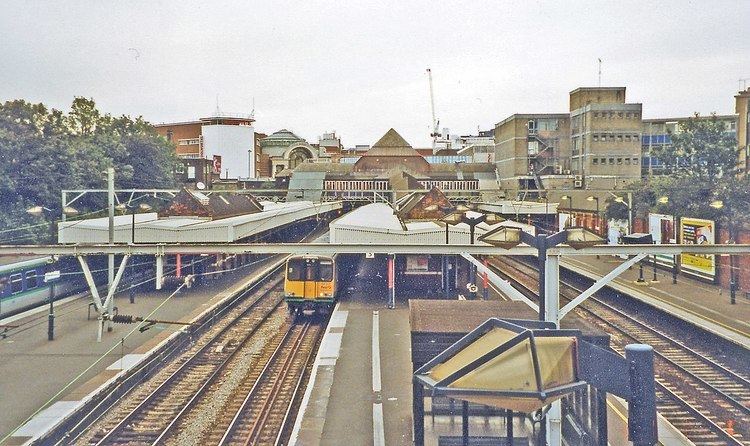Time 7:20pm Country England Date 16 January 1944 Injuries 38 | Location Ilford Type of incident Collision Total number of deaths 9 Trains 2 | |
 | ||
Rail line Great Eastern Main Line Cause Signal passed at danger Operator London and North Eastern Railway Similar Wembley Central rail crash, Spa Road Junction rail crash, Ealing rail crash, Cannon Street station rai, Purley station rail crash | ||
The 1944 Ilford rail crash occurred on 16 January 1944 when, in darkness and dense fog, an express passenger train passed a signal at 'danger' and collided with another passenger train that was stopped at Ilford railway station in Essex.
Contents
The collision killed nine people, including three United States Army personnel and Frank Heilgers, the Member of Parliament for Bury St. Edmunds. Thirty-eight people were injured.
Collision
At approximately 7:20 pm on 16 January 1944, in dense fog and wartime conditions, the 2:38 pm express train from Great Yarmouth was stopped at Ilford en route to London Liverpool Street. Due to poor visibility, the driver had not seen several 'caution' signals and subsequently stopped 110 yards (100 m) past a 'danger' signal. The driver walked to the signalbox and after a short wait was given a "line clear" by the signalman.
As the driver returned to his train the signalman received a telephone call from a colleague in the adjacent box reporting that the following train, the 2:40 pm express from Norwich had passed his signals at danger. The Ilford station inspector, who had arrived at the signalbox to find out why the Yarmouth express had stopped, was sent to place detonators at the rear of the train, however, before he was able to take any action the Norwich train ran into the rear of the Yarmouth service at a speed of 20–25 mph (32–40 km/h).
The Yarmouth train comprised a 4-6-0 steam locomotive hauling nine coaches and a two-coach articulated set. The Norwich service was made up of a 4-6-0 locomotive hauling ten coaches and a two-coach articulated set. Both services were busy with passengers. There were nine fatalities as a consequence of the collision, including Frank Heilgers, the Member of Parliament for Bury St. Edmunds. Twenty-eight people were hospitalised and ten others suffered shock or minor injuries.
Aftermath
First aid was available immediately as an American doctor and nurse had been travelling on the train; also a member of staff had been ambulance-trained. Ilford civil defence personnel arrived at 7:36 pm and ambulances and the civil rescue squad following at 7:50 pm. A local United States Army depot sent a medical detachment. Hampered by a lack of light and the fog, the last of the casualties were only recovered by 9:20 pm.
The collision blocked the 'through' (fast) lines to and from Liverpool Street until 2:30 pm the next day, but the 'local' (slow) lines were not affected.
